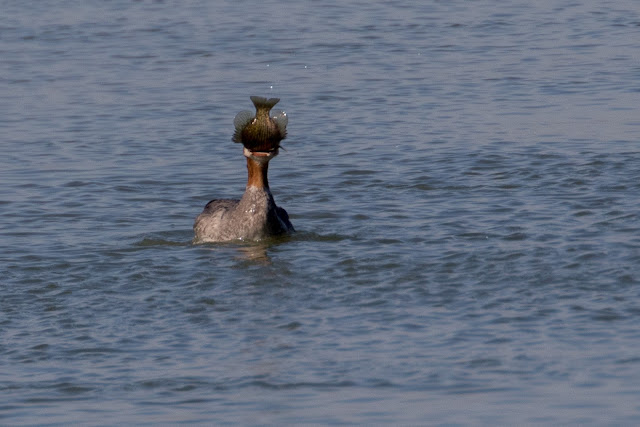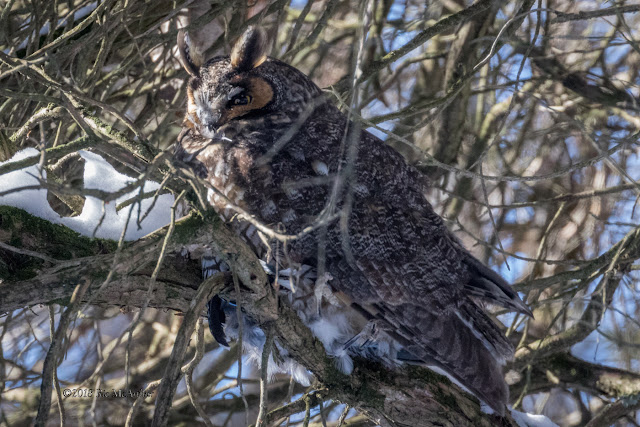Male common goldeneye duck.

Another of the ducks we saw in Windsor last week. Odd looking isn't he. Bucephala clangula Goldeneye chicks leave the nest just one day after they hatch. The first step can be a doozy, with nests placed in tree cavities up to 40 feet high. As the female stands at the base of the tree and calls, the downy chicks jump from the nest hole one after the other and tumble to the ground. source - www.allaboutbirds.org/…/Common_Goldeneye/lifehistory











